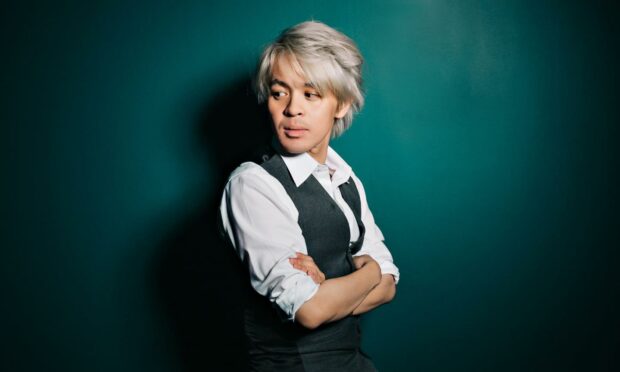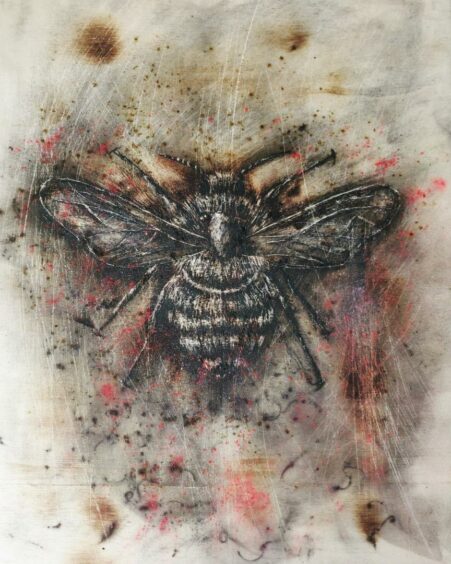An Inverness artist’s explosive gunpowder work has landed him a place in Northern Ireland’s most prestigious visual arts establishment.
Frank To’s distinctive and dynamic gunpowder artwork has been selected for the forthcoming Royal Ulster Academy after sparking much interest.
Although he has a background in fine art and oil painting, Mr To has been working with gunpowder for a couple of years.
“I just wanted to make the process a bit more exciting and I think a little bit more dangerous in a way,” he explained. “With gunpowder, it’s got a high-risk factor, not only for self-injury but also because I have to control it in such a way I can work with it.
“There’s always a danger that the piece or the paper could disintegrate under the amount of ignition or explosion on the paper.”
Mr To uses handmade paper that is designed to withstand the ignition whereas normal paper would disintegrate from the high-heat methods.
He believes that as a contemporary artist it is important for him to reinvent and innovate his way of working.
The award-winning artist said: “Anyone could draw, anyone could use a pencil, anyone could use charcoal – but how many people can actually use gunpowder or fire to make artwork?”
Igniting interest and inspiration
He is recognised amongst art critics and high-profile collectors, including New York-based Michel Witmer, who hangs Mr To’s work alongside those of Picasso and Warhol.
He was first trained at the University of Huddersfield and then in Duncan of Jordanstone at the University of Dundee.
It was during his time in Dundee that Sir Patrick Stewart discovered his work at the degree show in 2004.
Not only did he buy Mr To’s degree work, but he also bought his master’s degree work and has continued to collect his work and stay in touch over the years.
Sir Patrick Stewart became a mentor to the contemporary artist, teaching him the importance of having a unique voice.
Mr To believes that his passion for being innovative with his art practice ignited recognition from the Royal Academies and Societies.
In July, he was the only Scottish artist to sell out at the Society of Graphic Fine Art in London.
Now, he is one of four Scottish artists selected for the Royal Academy in Ireland, which he describes as an “honour”.
He said: “Not only is it the fact I’m one of four, but I’m representing Scotland in Ireland, especially in the Royal Ulster Academy in Belfast, and highlighting the importance of Scottish contemporary art.”
While practicing as a contemporary artist, Mr To lectures at Inverness College UHI. He believes that passing on his knowledge is a “privilege” that also reminds him about the principle of drawing.
“I’m not a lecturer who is an artist, I am an artist who is a lecturer,” he said. “There is a real big difference between the two, and it is really important because it shows the students that I am physically out there still in the field doing what I’ve been taught and trained.
“When they see what I’m doing it inspires them to follow suit.”
Difficult year for artists and art students
Mr To was alone in his flat during lockdown, teaching virtually and unable to go to his art studio.
He believes that making artwork kept him sane throughout lockdown and used letters about coronavirus to create satire work.
Although he describes himself as being in a comfortable position as a lecturer he still pushes himself to compete.
Representing Scotland at the Royal Ulster Academy, despite the pandemic, is a personal achievement for the artist.
He said: “To be honest, it has been a difficult year for both professional artists and art students in the creative and cultural sector. Despite this, I wanted to keep pushing the boundaries of my art and further enhance the reputation of Scottish art in these unknown times.
“I am very honoured to be unconditionally accepted in this year’s annual exhibition. I will be showing with the best art contemporaries who I strongly admire and respect.”
Mr To’s work will be on display in the Royal Ulster Academy from October 28 until January 2 next year.

